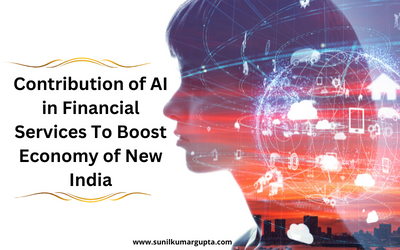


Cyber Security – An Insurance From Cyberattacks or Crimes
Introduction of Cyber Security On the internet, data or information is widely spread and with each year, technology is becoming more comprehensive and complicated, and so do cyberattacks. Digital crime is also enhancing with great intensity and certainly, it is not...
Contribution of Artificial Intelligence in Financial Services To Boost Economy of New India
Has a chatbox ever asked you to open a savings account? Does ever a computerized assistant resolve your queries in minutes? In this blog, we will understand how Artificial Intelligence drives Indian economy. The world of AI is tremendously booming and it can be...
Master Circular On Bank Finance To Non-Banking Financial Companies (NBFCs)
This Master Circular consolidates instructions on the above matter issued up to January 04, 2022 by which more autonomy have been given to NBFCs registered with RBI
